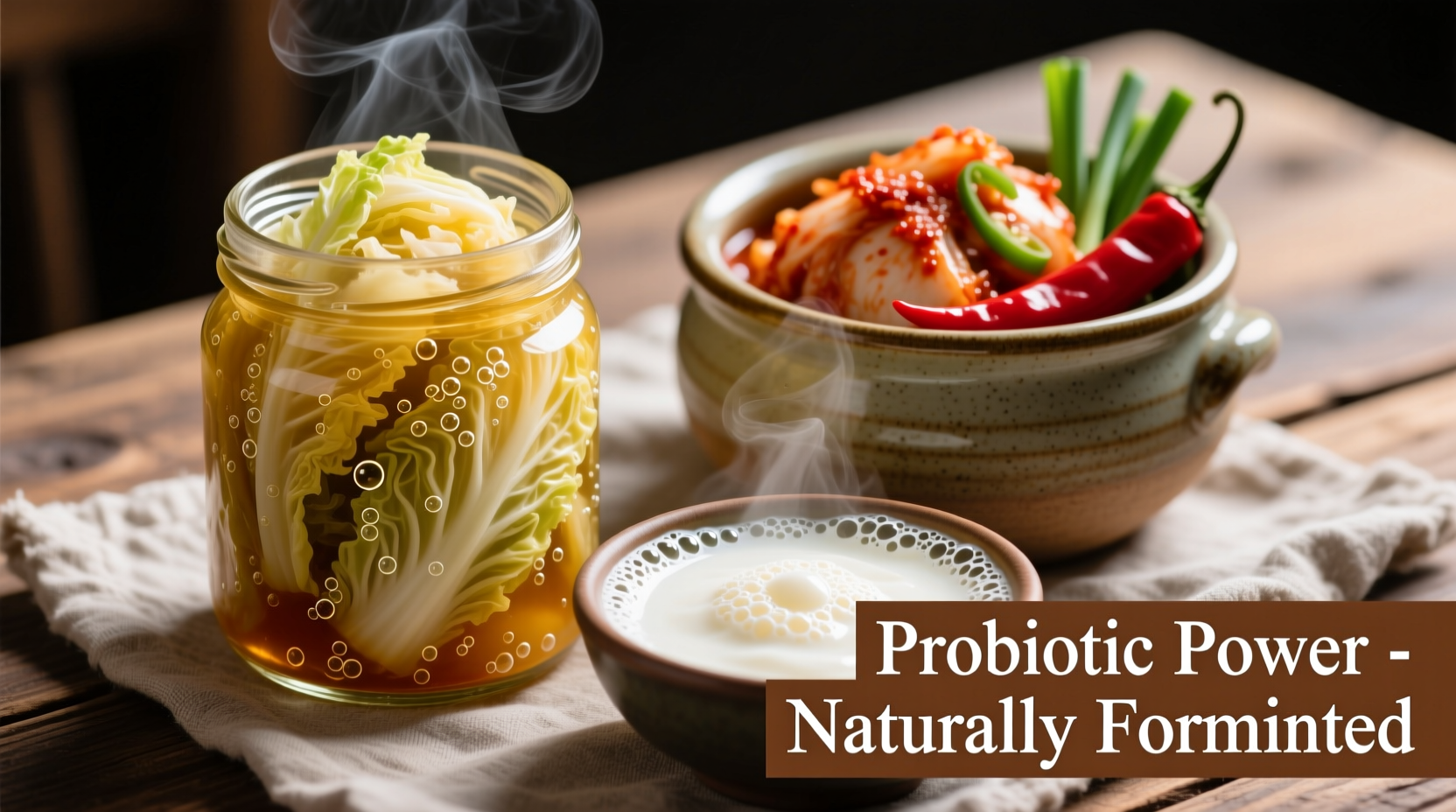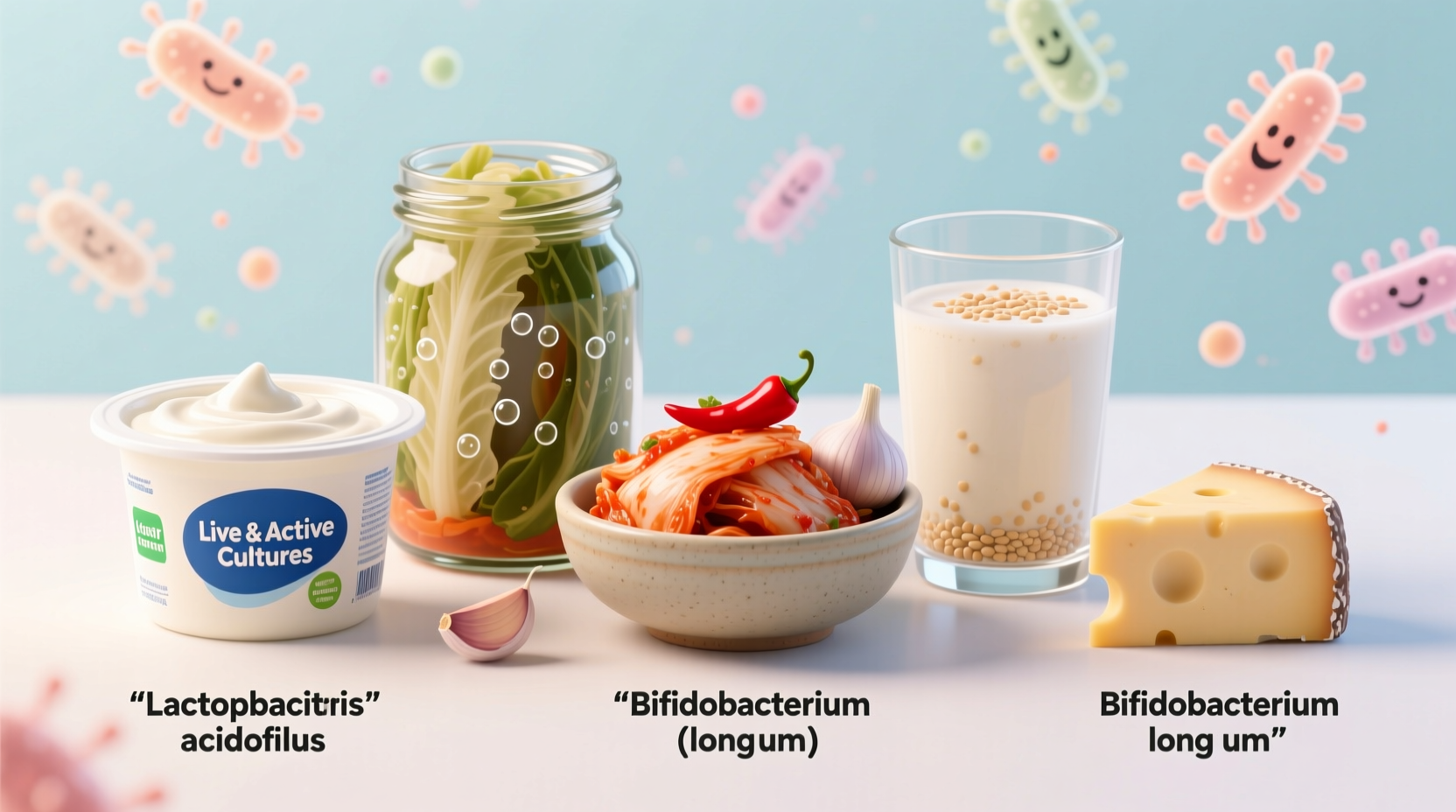Understanding what qualifies as a true probiotic food separates science from marketing hype. Unlike regular fermented foods, probiotic foods must contain specific live bacterial strains proven to survive digestion and deliver measurable health benefits. This distinction matters because not all fermented products qualify as probiotics—only those meeting strict scientific criteria defined by the International Scientific Association for Probiotics and Prebiotics (ISAPP).
The Scientific Definition That Matters
When you search what is a probiotic food, you deserve the precise scientific definition, not just marketing claims. According to ISAPP, a probiotic food must contain live microorganisms that:
- Survive stomach acid and reach the gut alive
- Contain documented strains with proven health benefits
- Provide sufficient colony-forming units (CFUs) per serving
- Maintain viability through expiration date
This explains why your standard store-bought sauerkraut often fails as a probiotic source—most undergo pasteurization that kills beneficial bacteria. True probiotic foods require specific production methods that preserve live cultures.
| Product Type | Contains Live Probiotics? | Scientific Evidence Level |
|---|---|---|
| Refrigerated yogurt with "live cultures" label | Yes (L. bulgaricus, S. thermophilus) | High (NIH studies) |
| Shelf-stable kombucha | No (pasteurized) | None |
| Traditional kimchi (unpasteurized) | Yes (L. plantarum, Leuconostoc) | Moderate (Korean research) |
| Canned sauerkraut | No | None |
How Probiotic Foods Actually Work in Your Body
The journey of probiotic foods through your digestive system reveals why specific strains matter. When you consume properly prepared probiotic foods, these live microorganisms:
- Survive stomach acid (only certain strains like Lactobacillus and Bifidobacterium)
- Adhere to intestinal lining to establish temporary residence
- Produce beneficial compounds like short-chain fatty acids
- Compete with harmful bacteria for resources
- Modulate immune responses through gut-associated lymphoid tissue
This biological process explains the measurable improvements in gut barrier function documented in NIH studies. However, benefits require consistent consumption—probiotics don't permanently colonize your gut.
Top 5 Evidence-Based Probiotic Food Sources
1. Traditional Yogurt (With Specific Strains)
Not all yogurts qualify as probiotic foods. Look for products containing Lactobacillus acidophilus and Bifidobacterium lactis with at least 1 billion CFUs per serving. Research from the FDA shows these strains improve lactose digestion and support immune function. Avoid brands with high sugar content that counteract benefits.
2. Water Kefir vs. Milk Kefir
Kefir contains 30+ probiotic strains—more than most yogurts. Milk kefir provides complete protein and calcium, while water kefir offers a dairy-free alternative. A 2018 NIH study confirmed kefir's superior colonization ability compared to yogurt due to its diverse microbial community.

3. Authentic Kimchi (Not Pasteurized)
Korean researchers at Seoul National University identified Leuconostoc mesenteroides and Lactobacillus kimchii as key probiotic strains in traditionally prepared kimchi. These microbes produce antimicrobial compounds that survive stomach acid. Store-bought versions often lack these benefits due to vinegar preservation.
4. Miso Paste (Fermented at Least 180 Days)
Longer fermentation creates more stable probiotic strains. Japanese studies published in Frontiers in Microbiology show miso fermented over 180 days contains Aspergillus oryzae strains that survive digestion. Add miso to cooled dishes—boiling destroys probiotics.
5. Traditional Sauerkraut (Refrigerated)
Only unpasteurized, refrigerated sauerkraut contains live probiotics. The World Health Organization recognizes sauerkraut's Lactobacillus plantarum strain for improving digestive enzyme production. Avoid shelf-stable versions treated with vinegar.
When Probiotic Foods Won't Help (Important Boundaries)
Understanding the limitations of probiotic foods prevents wasted effort. Research shows they provide minimal benefit in these situations:
- During antibiotic treatment: Most probiotic foods can't compete with antibiotic strength (use specific medical-grade probiotics instead)
- For serious digestive disorders: IBS or IBD patients need targeted strains prescribed by gastroenterologists
- With improper storage: Probiotics die when not refrigerated properly
- With high-sugar versions: Sugar feeds harmful bacteria, counteracting benefits
The NIH notes that probiotic foods work best as preventive measures for generally healthy individuals, not as treatments for existing conditions.
How to Verify Real Probiotic Foods
Follow this practical checklist when shopping to avoid fake probiotic products:
- Check for "live active cultures" on packaging (not just "fermented")
- Look for specific strain names (e.g., Lactobacillus rhamnosus GG)
- Confirm refrigeration requirement (shelf-stable usually means dead cultures)
- Check expiration dates—probiotics decline over time
- Avoid products with added sugars exceeding 8g per serving
Remember that CFU counts matter less than strain specificity. A product with 50 billion CFUs of ineffective strains provides no benefit, while 1 billion CFUs of well-researched strains delivers measurable results.
Practical Daily Integration Guide
You don't need expensive supplements to benefit from probiotic foods. Incorporate them effectively with these science-backed strategies:
- Morning: 1/2 cup plain kefir with berries (avoid mixing with hot foods)
- Lunch: Kimchi as side dish (2-3 tablespoons) with meals
- Snack: Yogurt with flax seeds (prebiotic fiber enhances probiotic effects)
- Dinner: Miso soup added to cooled broth (never boiled)
Consistency matters more than quantity—daily consumption of small amounts (1/4 to 1/2 cup) delivers better results than occasional large servings, according to ISAPP research.











 浙公网安备
33010002000092号
浙公网安备
33010002000092号 浙B2-20120091-4
浙B2-20120091-4